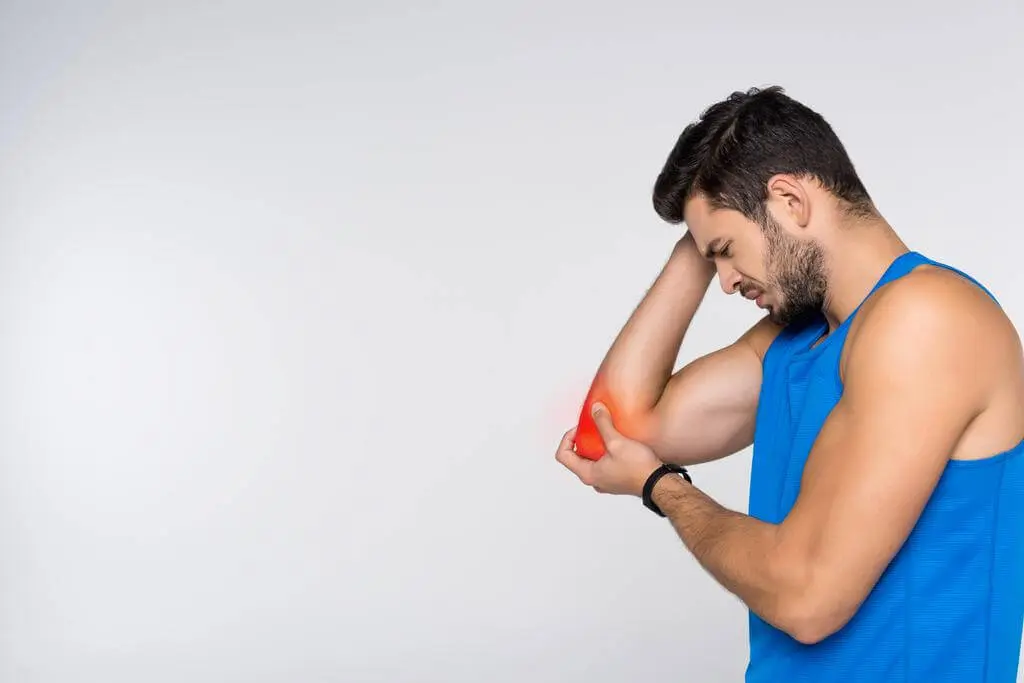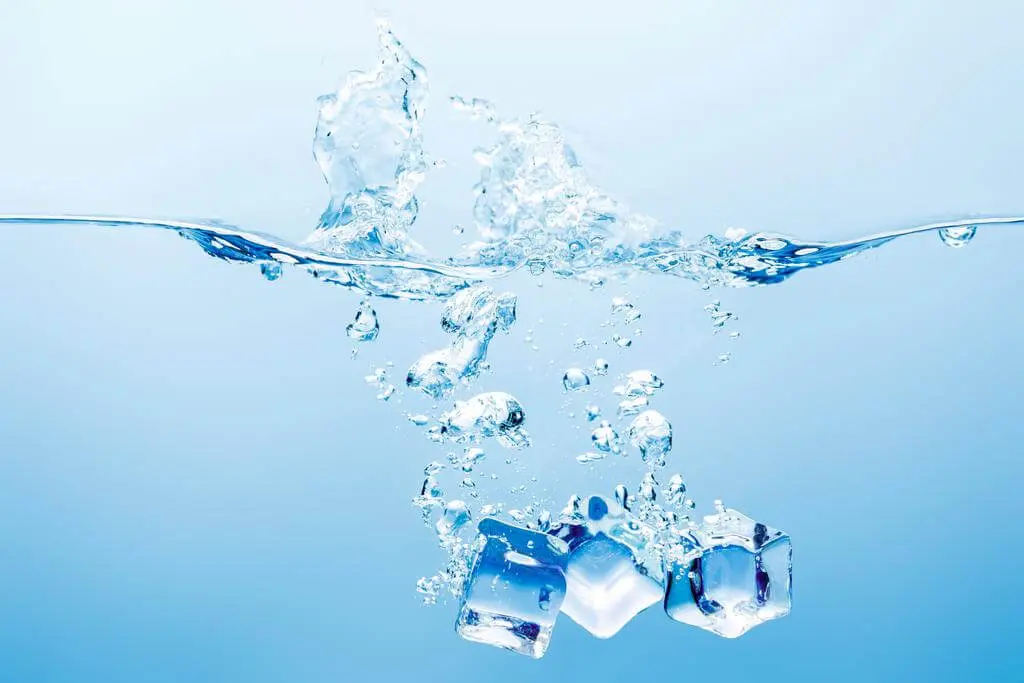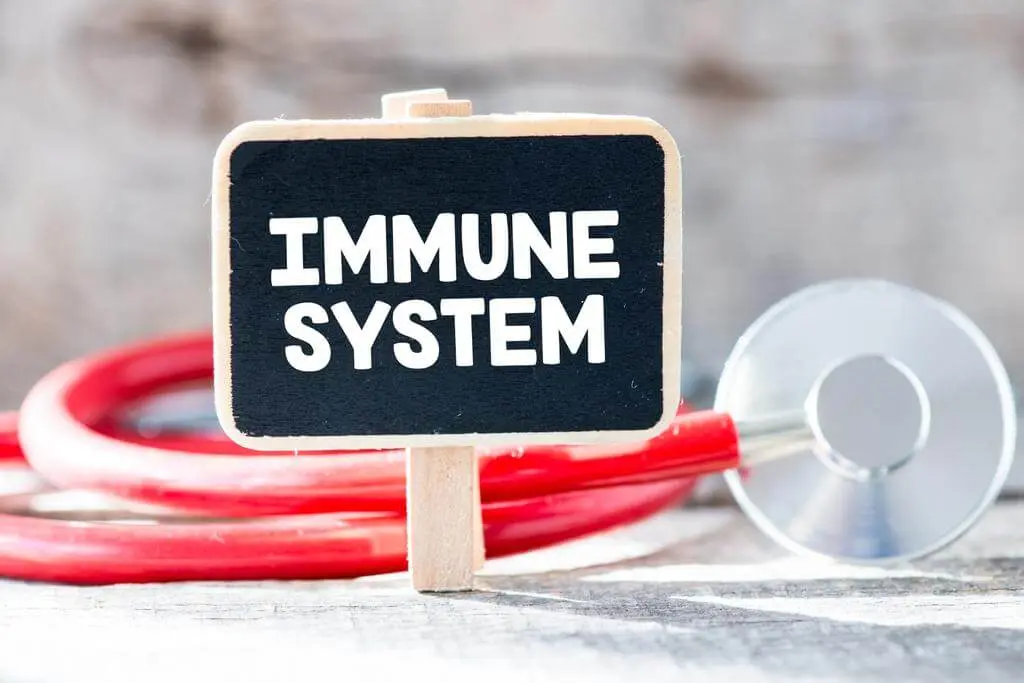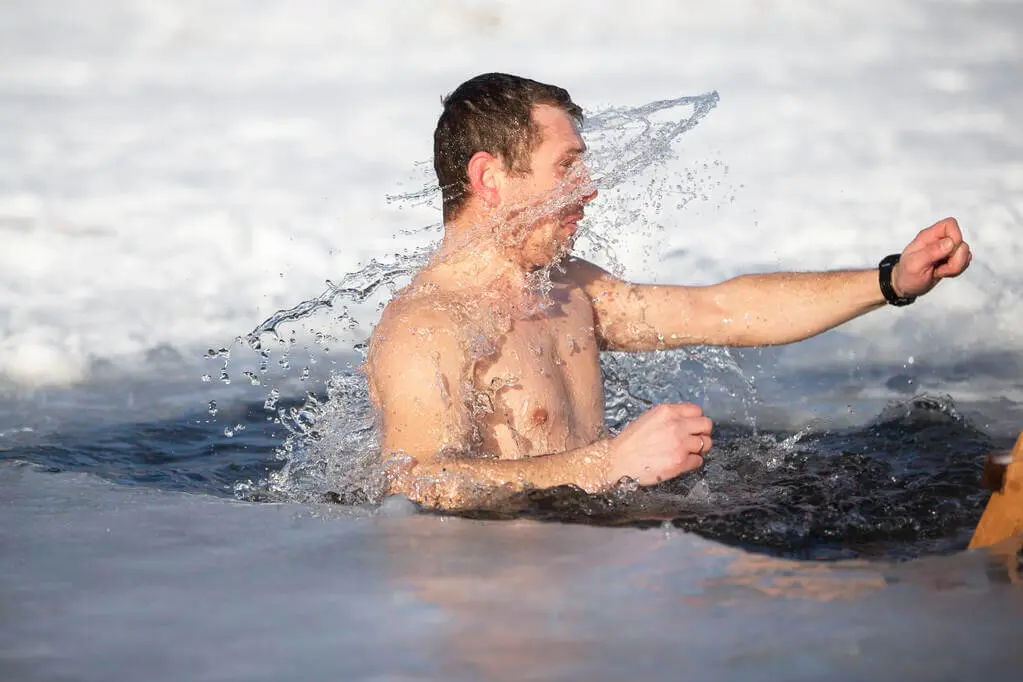The Incredible Wonders of Ice Baths: Unleash the Power of Workouts, Glow with Radiant Skin, and Boost Your Immune Health!
Ice baths have become a popular recovery tool among athletes and fitness enthusiasts due to their numerous benefits. These cold water immersions can enhance workouts, promote skin health, and boost the immune system.
The Advantages
One of the main advantages of ice baths is their ability to reduce pain, inflammation, and muscle fatigue. When exposed to cold temperatures, blood vessels constrict, which helps limit inflammation and swelling that may occur after intense physical activity. Additionally, the cold shock response triggers the release of endorphins, natural pain-relieving hormones, which can help alleviate soreness.
Ice baths also have positive effects on skin health. Cold water immersion can improve blood flow to the skin, promoting a healthy complexion and reducing the appearance of blemishes.
Furthermore, cold water therapies can reduce the risk of skin conditions like eczema and psoriasis by soothing irritated skin and reducing inflammation.
In terms of immune health, ice baths can enhance the body’s immune response. Cold exposure stimulates the production of white blood cells, which are crucial for fighting off infections and boosting overall immunity. Regular ice baths can strengthen the immune system, reducing the risk of illnesses such as the common cold.
Overall, ice baths offer a wide range of benefits beyond just muscle recovery. They can improve mood, enhance immune response, and promote healthy skin. Incorporating cold water immersion into your routine can significantly enhance your overall well-being.
Indulge in the Unbelievable Advantages of Embracing an Ice Bath Adventure!
Ice baths, also known as cold water immersion therapies, have been gaining popularity in recent years due to their numerous health benefits. These invigorating treatments involve immersing the body in frigid water, usually at temperatures below 10 degrees Celsius, for a specific duration.
While they may seem daunting at first, ice baths provide a range of advantages that can greatly enhance one’s physical and mental well-being.
Relieves Post-Workout Muscle Pain and Soreness
Ice baths are an effective method for relieving post-workout muscle pain and soreness. The cold temperatures cause vasoconstriction, which is the narrowing of blood vessels. This narrowing reduces blood flow to the affected muscles and decreases inflammation, therefore alleviating pain.
During an ice bath, the body is exposed to frigid water temperatures which lower the core temperature. This cold shock response triggers a natural physiological reaction that helps with pain relief. The cold temperatures constrict the blood vessels, reducing blood flow and the release of inflammatory substances.

After exiting the ice bath, the blood vessels in your body widen, allowing for increased blood flow to your muscles. This aids in their quicker recovery by supplying them with fresh oxygen and nutrients. Additionally, the contrast between the cold water immersion and the warmer air promotes muscle relaxation and decreases muscle tension.
The benefits of an ice bath can last up to 24 hours after the session. This prolonged effect aids in reducing muscle soreness and promoting quicker recovery from intense physical activity.
Eases Swelling and Inflammation
Compared to other methods, such as ice packs or cold compresses, ice baths provide a more comprehensive and thorough approach to reducing swelling and inflammation. The immersion in cold water allows for a larger surface area of the body to be exposed to the cold temperatures, resulting in greater overall vasoconstriction and decreased blood flow to the affected area.
This makes ice baths particularly beneficial for athletes in recovery, as they can help speed up the healing process by reducing inflammation after intense physical activity.

Additionally, ice baths have shown potential in alleviating pain in individuals with chronic conditions such as fibromyalgia and rheumatism, where inflammation is a common symptom.
Cools You Down When You’re Overheated
Cooling down when you’re overheated after physical activity is crucial for maintaining a healthy body temperature and reducing the risk of heat stroke. After exerting yourself, your body temperature rises, and if not properly cooled down, it can lead to dangerous heat-related complications.
One effective method to cool down is through cold water immersion. Submerging yourself in cold water helps to rapidly lower your body temperature by dissipating the heat through conduction. The cold water causes your blood vessels to constrict, reducing blood flow to the skin and allowing the heat to be transferred to the water.

Cold water immersion not only cools your body down quickly but also helps to alleviate other symptoms of overheating, such as dizziness and fatigue. It can also promote cardiovascular health by improving blood circulation and reducing inflammation.
To safely warm up after cold-water exposure, it is important to follow a few steps:
1. First, remove any wet clothes and pat yourself dry.
2. Engage in gentle movements and stretches to gradually increase blood flow and restore flexibility to your muscles.
3. Avoid taking hot showers immediately, as this can cause a sudden drop in blood pressure. Instead, opt for warm beverages to help raise your core temperature gradually.
4. Finally, dress in dry and warm layers to prevent further heat loss.
Incorporating proper cool down techniques after physical activity can help maintain a healthy body temperature and reduce the risk of heat stroke.
Cold water immersion, followed by safe warming up practices, ensures your body recovers effectively and minimizes any potential risks associated with overheating.
Improves Mood
Immersing yourself in an ice bath can lead to physiological responses that release feel-good chemicals in the body, thus potentially improving mood and overall well-being.

One of these chemicals is dopamine, a neurotransmitter that plays a crucial role in regulating mood and motivation. Studies have shown that cold-water immersion can increase dopamine levels, leading to a boost in mood and increased feelings of happiness and confidence.
Another important chemical released during cold water immersion is endorphins. These natural painkillers are known for their ability to reduce stress and induce a sense of euphoria. By taking an ice bath, you can stimulate the release of endorphins, which can help alleviate feelings of anxiety, depression, and stress.
What the Research Says
Research has supported these findings, with studies showing that cold water immersion can lead to improvements in quality of life and a reduction in symptoms of anxiety, depression, and stress. People who regularly partake in cold water therapies often report an enhanced sense of well-being and mental clarity.
Incorporating cold water immersion, such as ice baths, into your routine can be a powerful way to naturally improve your mood and overall mental health.
So next time you’re feeling down or stressed, consider taking a refreshing dip in an ice bath to uplift your spirits and promote a positive mindset.
Manages Weight
Ice baths can have a significant impact on weight management by harnessing the power of cold temperatures. While cold exposure initially lowers metabolism, it also requires extra calories to warm the body back up, leading to increased calorie burning and potential weight loss.
Activates Fat Brown Cells
One fascinating aspect of cold immersion is its ability to activate brown fat cells. Unlike white fat cells, which store excess calories, brown fat cells specialize in burning energy to generate heat. By subjecting the body to cold temperatures, ice baths stimulate the conversion of white fat cells into brown fat cells. This transformation helps regulate blood sugar and insulin levels, contributing to better weight management.
Research
Research supports the benefits of cold exposure in weight loss. Studies have shown that cold immersion increases metabolism, leading to enhanced calorie burning.
Additionally, shivering, a natural response to cold, further contributes to calorie expenditure. By incorporating ice baths into their routine, individuals can potentially see improvements in their weight management efforts.
Soothes the Skin
Ice baths not only have numerous benefits for weight management, but they can also provide soothing effects for the skin. The cold temperature of the water used in ice baths can work wonders in calming and revitalizing the skin.
Reduces Pores and Puffiness
One of the key ways ice baths help soothe the skin is by causing the small blood vessels in the skin to constrict. This constriction can help reduce the appearance of pores and puffiness, giving the skin a smoother and more toned look. The cold exposure can also help tighten the skin, making it feel firmer and more refreshed.
Helps Ease Inflamed or Itchy Skin
In addition to reducing pores and puffiness, ice baths can also help ease inflamed or itchy skin. The cold temperature can have a numbing effect on the skin, providing relief for irritated or inflamed areas. However, it’s important to note that if there are open wounds, it is best to avoid taking an ice bath as the cold water can exacerbate the condition.
Incorporating ice baths into your skincare routine can be a refreshing and rejuvenating experience. Soothing the skin, reducing the appearance of pores and puffiness, and easing inflammation are just a few of the benefits that cold-water exposure can provide.
Just remember to take caution and avoid ice baths if you have any open wounds.
Supports Immunity
Ice baths have been increasingly recognized for their potential benefits in supporting the immune system. Numerous studies have suggested a positive link between cold water immersion and improved immune response.
One key finding is the increase in immune-related markers observed after cold water immersion. For example, research has shown an elevation of IL-6, a cytokine that plays a vital role in regulating immune responses and inflammation.
Additionally, cold water immersion has been associated with increased levels of CD3, CD4, and CD8, which are markers for various types of immune cells, such as T lymphocytes. Moreover, activated T and B lymphocytes, which are crucial in mounting a strong immune defense against pathogens, have also been found to increase after cold water immersion.
* Hey there, do you want to transform the health of your community with the earth’s most powerful plants? Ora Organic creates supplements from the earth’s most powerful plants to transform your health. From protein to vitamins to probiotics, they do it all! Want to find out more? Click the link below:
https://oraorganic.pxf.io/AWRmyK
As an Impact Affiliate, I receive a small commission at no cost to you, if you proceed to make a purchase.

The exact mechanisms behind these immune-enhancing effects are not fully understood. However, it is believed that the cold water exposure triggers a stress response in the body, causing a release of various immune mediators and activating immune cells.
Enhancing immune response can be particularly beneficial for overall health and wellness. A robust immune system helps protect against infections and diseases, supporting optimal well-being. By incorporating ice baths or cold water immersion into their routine, individuals may potentially strengthen their immune system and reduce the risk of illness.
Aids Exercise Recovery
Ice baths, also known as cold water immersion, have been widely used by athletes and fitness enthusiasts to aid in exercise recovery. One of the key benefits of ice baths is their ability to reduce exercise-induced inflammation and aid in muscle recovery.
During intense physical activity, our muscles can experience micro-tears and inflammation. This inflammation can lead to muscle soreness and delayed onset muscle soreness. Ice baths can help minimize this inflammation by constricting blood vessels and reducing blood flow to the muscles. This cold therapy can help to decrease swelling and alleviate muscle soreness, allowing athletes to recover faster and get back to their training regimen.
What Studies Show – Cold Water Immersion vs Whole-Body Cryotherapy
Numerous studies have been conducted comparing the effectiveness of cold water immersion with whole-body cryotherapy in exercise recovery.
A study published in the Journal of Sports Science and Medicine found that cold water immersion was effective in reducing muscle soreness and improving muscle function compared to whole-body cryotherapy.
Another study published in the European Journal of Applied Physiology showed that cold water immersion was more beneficial in reducing inflammation markers compared to whole-body cryotherapy.
Lowers Core Body Temperature
When it comes to post-workout recovery, one effective strategy is to lower the core body temperature. This can be achieved through the use of ice baths, where individuals immerse themselves in cold water for a short duration, usually under 10 minutes.
Soaking in cold water after a workout can effectively reduce the core body temperature. This cooling effect is beneficial as it helps to bring the body temperature back to normal levels after overheating during intense physical activity.
The Benefits
Lowering the core body temperature has numerous benefits, one of which is the prevention of heat stroke and heat exhaustion. These conditions can occur when the body’s temperature regulation system becomes overwhelmed, usually due to prolonged exposure to high temperatures. By actively cooling down and reducing the core body temperature, the risk of these heat-related illnesses can be significantly reduced.
Ice baths provide a quick and efficient way to cool down when feeling overheated after exercise. They offer a refreshing and invigorating sensation, helping the body recover and return to a state of balance.
So next time you find yourself feeling hot and sweaty after a workout, consider the cooling effects of ice baths to lower your core body temperature and enhance your recovery process.
Discover the Process of Drawing an Ice Bath
Drawing an ice bath can be an effective way to recover after intense physical activity or to enhance your immune response. The steps on how to draw an ice bath are outlined below:
1. Fill a tub with cold water between 50°F and 59°F (10°C and 15°C).
2. Add ice: Gradually add ice to the water to lower the temperature further. Aim for a ratio of one part ice to three parts water. Stir the water gently to distribute the coldness evenly.
3. Gather the necessary equipment: Have a timer or stopwatch, a towel, and a change of dry clothes nearby. You may also want to have some soothing music or a book to keep yourself relaxed during the bath.
4. Take precautions: Before getting into the ice bath, make sure you are not experiencing any symptoms of hypothermia, such as shivering, dizziness, or confusion. Additionally, avoid jumping or submerging your head in the cold water to prevent potential risks.
5. Enter the ice bath: Slowly lower yourself into the water, allowing your body to acclimate to the cold temperatures. Stay in the bath for 10 to 20 minutes, gradually increasing the duration as your body becomes more accustomed to the cold.
6. Cool down afterward: Once you finish the ice bath, wrap yourself in a warm towel and put on dry clothes immediately. This will help prevent a sudden drop in body temperature and potential risks associated with it.
Drawing an ice bath can be a powerful tool for recovery and boosting your immune response. Always listen to your body and consult with a healthcare professional if you have any underlying health conditions or concerns.
Ice Baths Can Have Side Effects!
While ice baths can offer numerous health benefits, it’s important to be aware of potential side effects and complications that can arise from this cold therapy. When exposing your body to extremely cold temperatures, there is a risk of experiencing low body temperature, nerve damage, ice burns on the skin, and the cold shock response.
Certain individuals may be at a higher risk of complications when taking an ice bath. Those with poor circulation, open wounds, diabetes, heart disease, neuropathies, Raynaud’s syndrome, or cold urticaria should exercise caution or avoid ice baths altogether. These conditions can impair the body’s ability to regulate temperature or increase the risk of developing complications.

If you have a pre-existing medical condition, it is important to seek advice from a healthcare professional before attempting an ice bath. They can provide personalized guidance based on your individual health needs and determine the safety of an ice bath for you.
Remember, it’s always better to prioritize your health and seek professional advice, especially when considering therapies that involve extreme temperatures. Stay safe and informed to make the best decision for your well-being.
What is the Recommended Duration and Frequency for Ice Baths?
When it comes to ice baths, finding the right duration and frequency is essential for maximizing benefits while avoiding potential adverse effects. For athletes engaging in intense training or competition, a post-session ice bath can be highly beneficial.
Duration
A duration of 10-15 minutes is typically recommended, as this allows enough time for the cold water to penetrate the muscles and initiate the desired physiological responses.
Frequency
In terms of frequency, athletes can benefit from ice baths after each intense training session or competition. These frequent ice baths can help enhance recovery, reduce muscle soreness, and decrease inflammation.
However, it is important for athletes to listen to their bodies and adjust the frequency accordingly. If experiencing excessive fatigue or reduced performance, it may be wise to decrease the frequency or duration of ice baths.
What About Less Frequent or Lower Intensity Activity?
Ice baths can still provide benefits for individuals participating in less frequent or lower-intensity physical activities. This includes helping with muscle recovery, reducing soreness, and enhancing overall well-being.
Adverse Effects from Prolonged Exposure
It is important to note that excessive use of ice baths can have adverse effects. Prolonged exposure to cold temperatures can lead to frostbite, numbness, or tissue damage.
Additionally, frequent and prolonged ice baths may interfere with the body’s natural inflammatory response, which is necessary for muscle repair and growth.
Finding the Right Balance
Finding the right balance is key. Listening to your body, consulting with a healthcare professional, and gradually increasing duration and frequency as tolerated are vital steps in safely incorporating ice baths into your routine.

Summary
While ice baths can provide potential benefits, such as enhanced recovery, reduced muscle soreness, and decreased inflammation, it is important to consider the potential side effects and the need for more research in this area. Prolonged exposure to cold temperatures in ice baths can lead to frostbite, numbness, or tissue damage, highlighting the importance of using caution and monitoring the duration and frequency of ice baths.
Additionally, frequent and prolonged use of ice baths may interfere with the body’s natural inflammatory response, which is required for muscle repair and growth. It is crucial for further research to be conducted to gain a better understanding of the optimal protocols, risks, and benefits associated with ice baths.
By considering both the potential benefits and side effects, individuals can make informed decisions about incorporating ice baths into their recovery routine.





